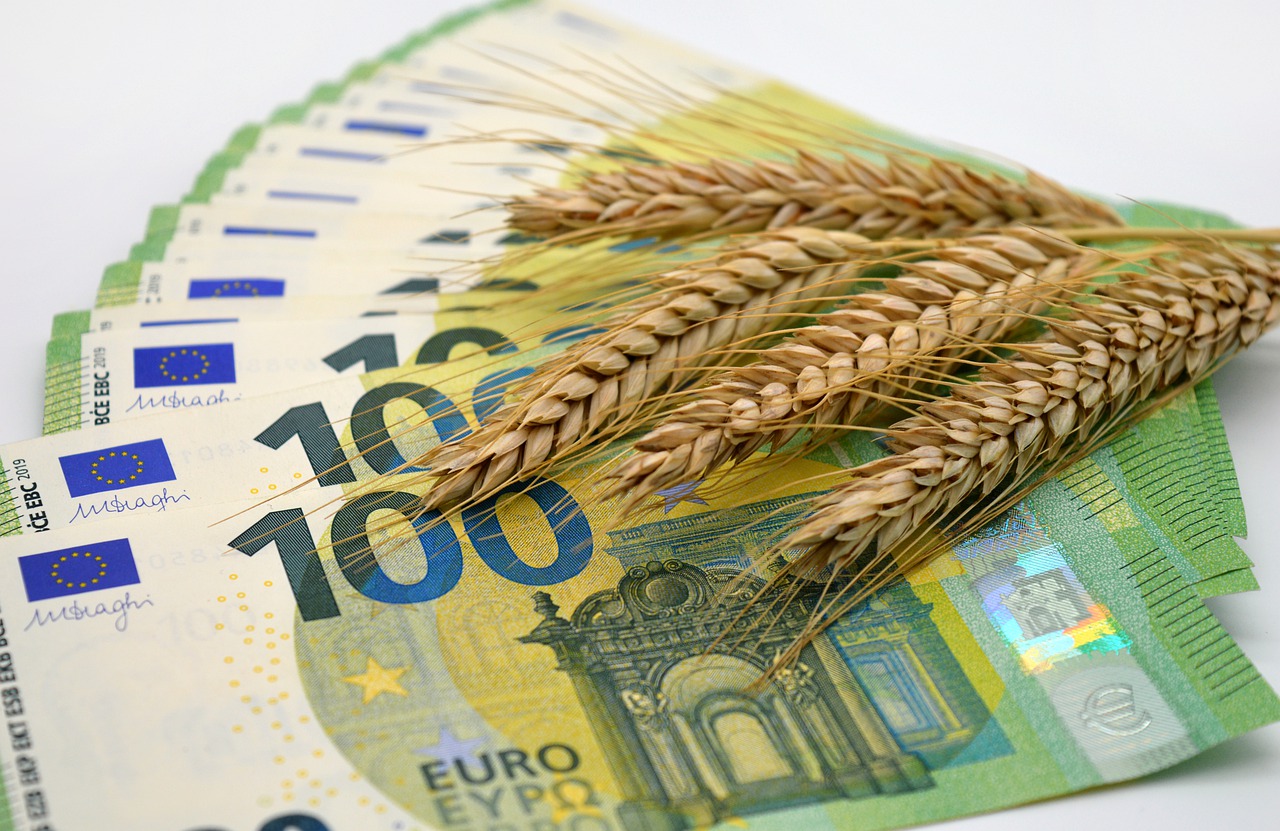Unlock the Secrets of Spanish Currency: Everything You Need to Know Before Your Trip!
GPT_Global - 2024-02-05 15:30:06.0 667
Can you exchange foreign currency for Spanish money in Spain?
As a popular destination for tourists and expats, Spain is a country where many individuals may find themselves in need of exchanging foreign currency for Spanish money. Fortunately, there are several options available for exchanging currencies in Spain, making it easy for visitors to get the local currency they need.
The first option for exchanging foreign currency in Spain is through banks. Most banks have branches in major cities and tourist areas and offer exchange services for various currencies. However, it is important to note that these services may come with high fees and exchange rates, so it is advisable to compare rates between different banks before making a decision.
Another option is to use an ATM. Most ATMs in Spain allow for international transactions and offer competitive exchange rates. However, it is important to check with your bank beforehand to see if they charge any fees for using international ATMs.
For those who prefer a more convenient and hassle-free option, currency exchange kiosks are also available in popular tourist areas and airports. These kiosks offer competitive rates and may be more convenient than going to a bank or ATM. However, it is still important to compare rates and watch out for hidden fees.
Lastly, remittance businesses also provide currency exchange services in Spain. These businesses specialize in sending and receiving money across borders, making them a reliable option for exchanging currency. They may also have better exchange rates and lower fees compared to banks and ATMs.
In conclusion, exchanging foreign currency for Spanish money in Spain is easily accessible through banks, ATMs, currency exchange kiosks, and remittance businesses. It is important to do some research and compare rates to get the best deal. With these options, travelers can easily obtain the local currency they need for their trip to Spain.

Is there a limit to the amount of cash you can bring in and out of Spain?
When it comes to bringing cash in and out of Spain, there are certain regulations and limitations in place. As a popular destination for tourists and expats, Spain has strict rules regarding the amount of cash that can be brought into the country, as well as taken out of it.
If you are traveling to Spain from another EU country, you are allowed to bring an unlimited amount of cash with you. However, if you are arriving from a non-EU country, you are only allowed to bring in up to 10,000 euros without having to declare it. Any amount above that must be declared to the Spanish customs authorities.
On the other hand, if you are leaving Spain to travel to another EU country, you are allowed to take an unlimited amount of cash with you. But if you are heading to a non-EU country, you are only allowed to take up to 10,000 euros without any declaration. Any amount above that must be declared to the customs authorities.
These limitations are in place to prevent money laundering and ensure the safety of financial transactions. In addition, carrying large amounts of cash can also make you a target for theft. Therefore, it is advisable to use alternative methods such as credit cards or wire transfers when making large transactions in or out of Spain.
If you need to send or receive money from abroad, using a reliable remittance service is the best option. These services offer competitive exchange rates and low fees, making it a convenient and cost-effective way to transfer funds. Plus, with the convenience of online transfers, you can easily send or receive money from the comfort of your own home.
In conclusion, while there are limitations on the amount of cash that can be brought in and out of Spain, it is always advisable to use alternative methods such as remittance services for larger transactions. Not only does this ensure compliance with regulations, but it also offers added convenience and security for your financial transactions.
Are there any unique designs or symbols on Spanish banknotes?
When it comes to currency, each country has its own unique designs and symbols that hold both cultural and historical significance. This is no different for Spanish banknotes, which feature a variety of interesting and colorful elements.
The most prominent design on Spanish banknotes is the portrait of significant figures from Spain's history, such as artists, poets, and monarchs. For example, the 20 euro banknote features a portrait of Spanish painter Diego Velázquez, while the 50 euro banknote showcases the renowned writer Miguel de Cervantes.
Aside from portraits, Spanish banknotes also incorporate elements of nature, architecture, and art. The 5 euro banknote, for instance, highlights the modern architecture of the Guggenheim Museum in Bilbao. Meanwhile, the 100 euro banknote incorporates the curious design of the Alhambra fortress in Granada, a popular tourist destination.
In addition to these unique designs, Spanish banknotes also have various symbols that hold significant meaning. The 10 euro banknote, as an example, features the map of Europe, symbolizing the integration and unity of the European Union, of which Spain is a member.
These distinctive designs and symbols not only add to the aesthetic appeal of Spanish banknotes, but they also serve as a reflection of the country's rich culture and history. As a remittance business, understanding the unique designs and symbols on Spanish banknotes can also be helpful in identifying and verifying the authenticity of bills, ensuring a secure and efficient money transfer process.
Are old Spanish banknotes still valid for use?
You may be wondering if old Spanish banknotes are still valid for use when sending money through a remittance business. The answer is yes, they are still accepted and can be exchanged for their current value.
However, it is important to note that the designs of Spanish banknotes have changed over the years, so it is best to check the series and date on the banknote before sending it through a remittance service. This will ensure that you receive the correct value for your money.
If you have any doubts or concerns about the authenticity of an old Spanish banknote, you can take it to a bank or currency exchange store to confirm its value. It is always better to be safe than sorry when it comes to handling money.
In addition, some remittance services may have specific policies regarding the acceptance of old banknotes. It is advisable to check with the specific service you plan to use to determine if they accept old Spanish banknotes and if there are any fees associated with exchanging them.
It is also important to keep in mind that old banknotes may have decreased in value due to inflation and changes in the economy. If possible, it is best to use newer banknotes when sending money through a remittance service to ensure that the recipient receives the intended amount.
In conclusion, old Spanish banknotes are still valid for use when sending money through a remittance business. However, it is important to check the series and date on the banknote, confirm its value, and be aware of any policies or fees associated with exchanging old banknotes. Using newer banknotes, if possible, is recommended to avoid any potential discrepancies in value.
Can you use credit cards in Spain?
If you are planning to travel to Spain, it's important to know whether credit cards are widely accepted in the country. As a popular tourist destination, Spain has a strong economy and a well-developed banking system, which makes it easy to use credit cards for both locals and tourists.
Payment with credit cards is accepted in almost all major establishments such as restaurants, hotels, and shops. This is especially true in big cities like Madrid, Barcelona, and Seville. However, smaller towns and villages may have limited options for credit card usage, so it's always a good idea to carry some cash with you.
Most credit card providers charge an additional foreign transaction fee for purchases made outside of your home country. It's important to check with your bank or credit card company to see if this applies to your specific card and what the fees are.
Some establishments also have a minimum amount required for credit card transactions. This can vary from 10-20 Euros, so it's best to have some cash on hand for smaller purchases.
When using your credit card in Spain, make sure to always pay in Euros and not in your home currency. This will save you from additional conversion fees. If given the option, always choose to be charged in Euros.
In case of emergencies or when traveling to more remote areas, it's always a good idea to have a backup plan by carrying some cash or a prepaid travel card. These can easily be purchased at banks or exchange offices.
To sum up, using credit cards in Spain is generally a convenient and safe option for travelers. Just make sure to check with your bank beforehand for any additional fees and always have a backup plan for unexpected situations. Enjoy your travels in Spain!
About Panda Remit
Panda Remit is committed to providing global users with more convenient, safe, reliable, and affordable online cross-border remittance services。
International remittance services from more than 30 countries/regions around the world are now available: including Japan, Hong Kong, Europe, the United States, Australia, and other markets, and are recognized and trusted by millions of users around the world.
Visit Panda Remit Official Website or Download PandaRemit App, to learn more about remittance info.



